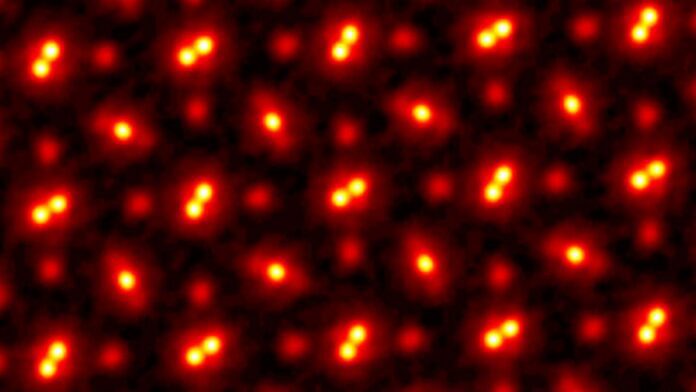In 2018, scientists from Cornell University tripled the resolution of a cutting-edge electron microscope using a powerful detector and an algorithm-driven approach called ptychography.
Even though it was effective, there was a flaw in the strategy. It functioned properly only with ultrathin samples, each no thicker than a few atoms. If the material were even thicker, the electrons would scatter in unpredictable directions, making disentanglement impossible.
Now, a team led by David Muller, the Samuel B. Eckert Professor of Engineering, has broken its own record with an electron microscope pixel array detector (EMPAD) that utilises even more complex 3D reconstruction methods.
Because of how sharp the image is, only the thermal motion of the atoms introduces any blur.
The group’s findings were presented in a study titled “Electron Ptychography Achieves Atomic-Resolution Limits Set by Lattice Vibrations,” which appeared in Science on May 20. Zhen Chen, a postdoctoral researcher, is the paper’s primary author.
“This doesn’t just set a new record,” Muller remarked. At this point, further progress towards resolution is effectively impossible. The location of individual atoms may now be determined with relative ease. As a result, we can now take the measurements we’ve always wanted to take. The multiple dispersion of the beam in the sample, first described by Hans Bethe in 1928, can finally be undone thanks to this development.
To detect variations in a material sample, ptychographers examine its overlapping scattering patterns.
“We’re chasing speckle patterns that look a lot like those laser-pointer patterns that cats are equally fascinated by,” said Muller. “By observing the pattern’s evolution, we can infer the shape of the object producing it.”
The beam is blurred slightly as the detector is defocused to collect as much information as possible. A picometer-accurate (one trillionth of a metre) image is recreated from this data using intricate algorithms.
Because of the new algorithms, “the largest blurring factor we have left is the fact that the atoms themselves are wobbling,” as Muller put it, “because that’s what happens to atoms at finite temperature.” “What we’re really talking about when we talk about temperature is the average speed with which the atoms are jiggling,” says scientist Michael Mann.
By adopting a substance with heavier atoms, which wobble less, or by cooling the sample, the researchers may be able to break their own record once again. Quantum fluctuations in atoms persist even at absolute zero, therefore the gain would be minimal even if it were achieved.
Scientists will be able to find individual atoms in three dimensions using this modern form of electron ptychography, even if they are obscured by background noise in conventional imaging techniques. Scientists will also be able to view and study the vibrations of individual impurity atoms in their unique arrangements. This could be particularly useful for imaging quantum materials, such as those used in quantum computers, as well as catalysts and semiconductors, and for analysing atoms at the boundaries where materials are linked.
Muller calls this imaging technique, which can be used to thick biological cells or tissues, “connectomics on demand.” This could one day be used to study how neurons in the brain communicate with one another.
Although the process is laborious and computationally intensive, it may be made more effective by using more advanced computers, machine learning, and faster detectors.
Muller, who co-directs the Kavli Institute for Nanoscale Science and co-chairs the Nanoscale Science and Microsystems Engineering (NEXT Nano) Task Force as part of Cornell’s Radical Collaboration project, remarked, “We want to apply this to everything we do.” Up until this point, we’ve all been making do with subpar eyewear. And now the two of them together make a great team. Putting on the new spectacles should be as natural as putting on your old ones; why else would you want to do that?
Reference:
Electron ptychography achieves atomic-resolution limits set by lattice vibrations. Science, 21 May 2021: DOI: 10.1126/science.abg2533
